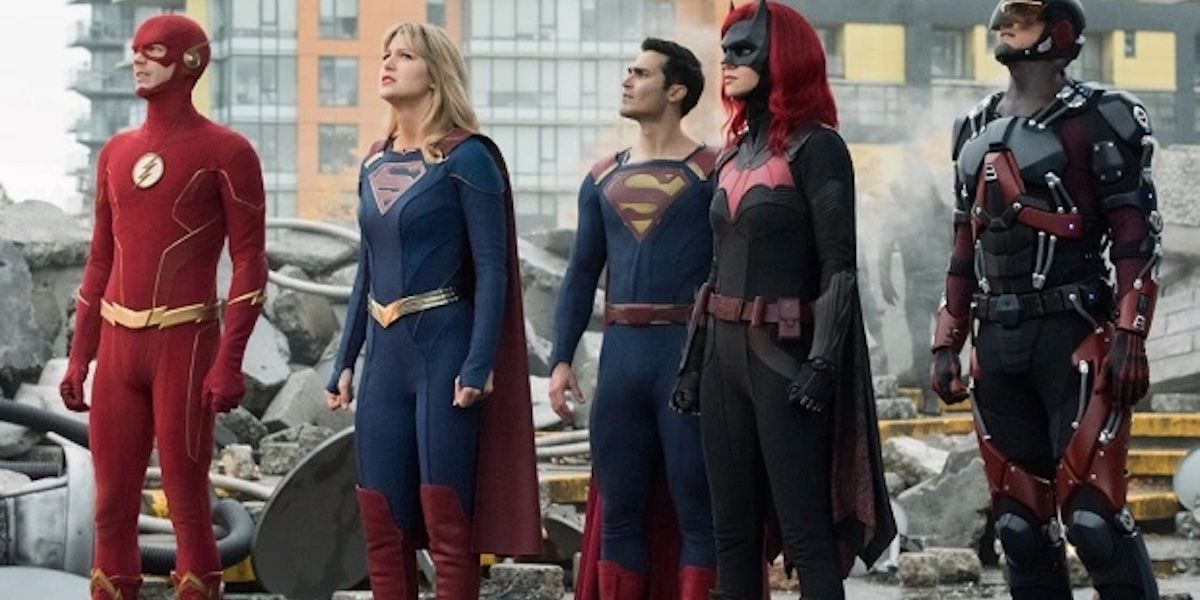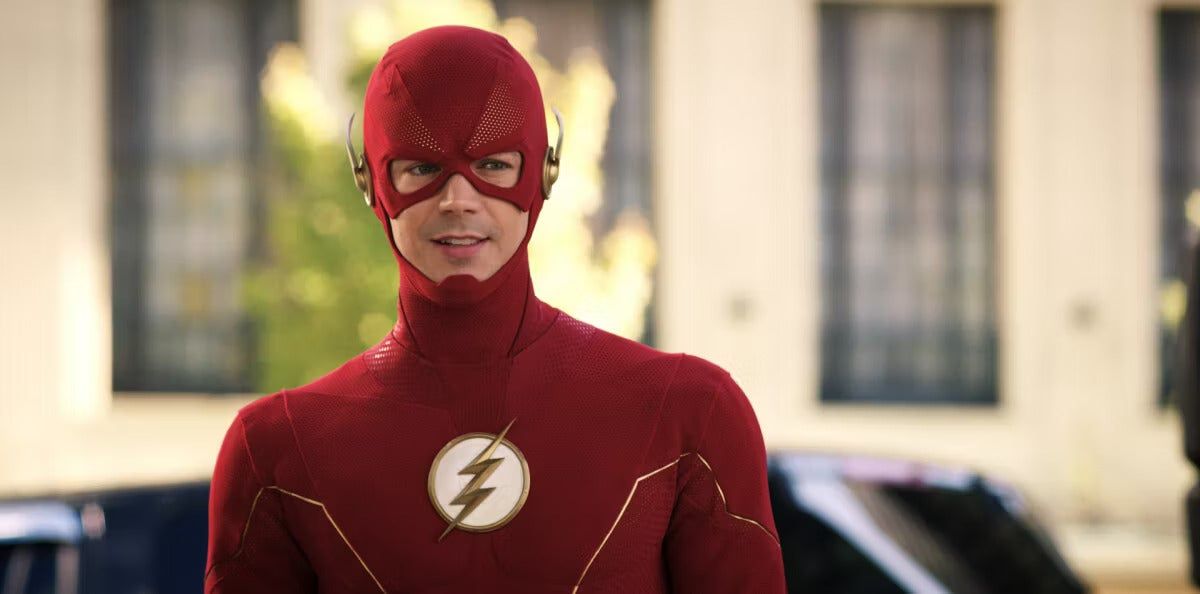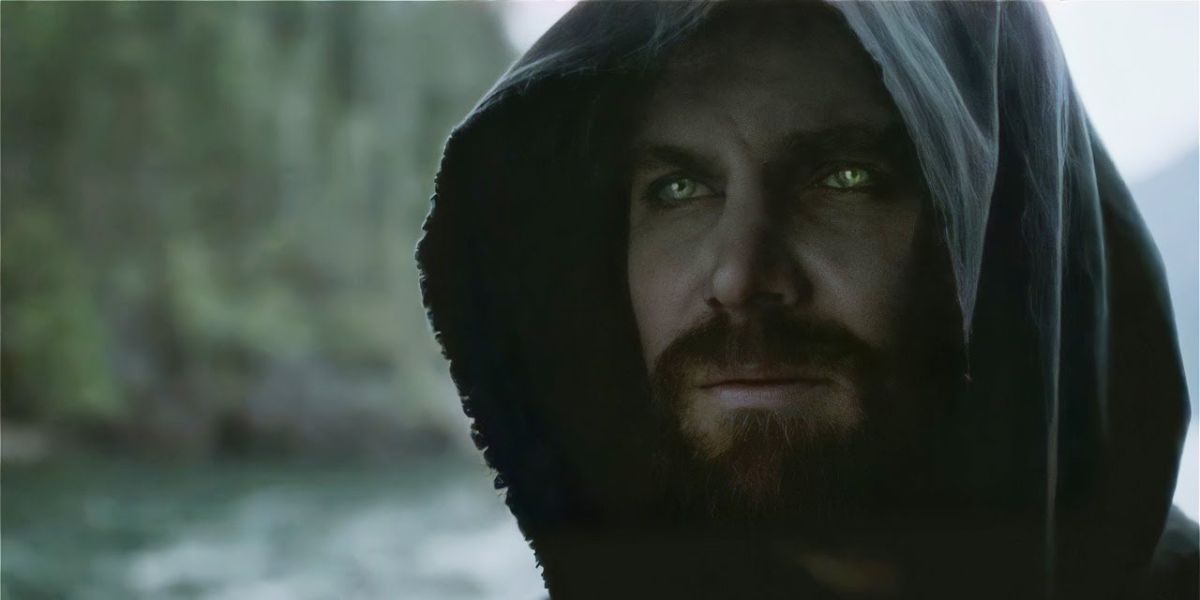This year will mark the end of an era, as The Flash recently premiered with its ninth and final season. When Grant Gustin hangs up his golden boots, it will mean that the "Arrowverse" - the interconnected universe of DC television shows that called the CW home - will officially come to an end. Under the guidance of powerhouse producer Greg Berlanti, the Arrowverse served as the small-screen counterpart to the Marvel Cinematic Universe and was constantly upping the stakes with its annual crossover events. But the biggest was the adaptation of the classic Crisis on Infinite Earths crossover - and that may provide a few lessons for James Gunn and Peter Safran as they shape the future of DC Studios.
The Road To Crisis
Crisis was first hinted at during the pilot of The Flash, when Harrison Wells (Tom Cavanaugh) - aka Eobard Thawne, the Reverse-Flash - views a newspaper from 2024 that contains the headline "Flash Missing, Vanishes In Crisis". However, that was more or less an Easter egg for the fans; the seeds wouldn't bear fruit until the actual crossovers started. And in the same vein as the MCU, the Arrowverse started small - first with a crossover between The Flash and its parent show Arrow. The next crossover would set up the third Arroverse show Legends of Tomorrow. And then the crossover after that would bring Flash, Green Arrow (Stephen Amell) and the Legends together alongside Supergirl (Melissa Benoist).
It would be another Crisis event - namely, the 2017 crossover event Crisis on Earth-X - that set the stage for what was to come. By the time Earth-X aired, the various cast and crew members had settled into a groove and were able to deliver a story that felt less like four interconnecting shows and more like a grand film. And it would beat other superhero films - including Spider-Man: Into The SpiderVerse - to the concept of a multiverse with the introduction of the Nazi-riddled Earth-X. It appears as though Gunn & Safran will take a similar approach, which is good. Too many failed cinematic universes have attempted to stuff their first installment full of setup when they should be focusing on establishing characters as well as easing audiences into the more outlandish elements of the story you're trying to tell.
Honoring Past and Present While Setting Up The Future
Eventually, Crisis on Infinite Earths would debut in 2019. The Monitor (LaMonica Garrett), a mysterious and potentially omnipotent being, had been testing Barry Allen and Oliver Queen in order to ready them for the incoming "Crisis". And that Crisis arrived when the Monitor's evil double, the Anti-Monitor, began to wipe world after world from existence. Eventually, Supergirl's home of Earth-38 was targeted - bringing the heroes together yet again for what was the biggest battle of their lives.
But the biggest moments in Crisis came from the plethora of actors who had previously played a part in DC's television and film projects. The late, great Kevin Conroy played Bruce Wayne in live-action after three decades of voicing the Dark Knight. Tom Welling and Erica Durance returned to their Smallville roles. Even Burt Ward and Tom Ellis appeared as Dick Grayson and Lucifer! And in the biggest jaw-dropper, Gustin's Flash encountered Ezra Miller's Flash, as DC's film and television universes literally collided.
The biggest implication, though, was that every project DC did matters. Whether it's something as short-lived as the Birds of Prey series or as divisive as Zack Snyder's take on the Justice League, Crisis was a sign to DC fans that out there in the vastness of the universe, their favorite version of their favorite character is continuing to have adventures. If Gunn and Safran do decide to explore the multiverse, it wouldn't hurt to include a cameo from a fan-favorite or two provided said cameo makes sense.
The True Measure of A Hero
The best superhero stories deal with sacrifice. From Logan to Avengers: Endgame, many films and television shows have asked what the hero is willing to lay down in order to keep the world safe. Crisis took a similar tactic, as Oliver was told by the Monitor that he would die during the Crisis. And he does - first after trying to save Earth-38, then in a final battle with the Anti-Monitor. Both times he fights to the bitter end, never stopping until he knows that everyone is safe.
This is a trait that Gunn is rather familiar with. In his Guardians of the Galaxy films, both Groot and Yondu gave their lives to protect others - with Guardians of the Galaxy Vol. 3 all but hinting that Rocket Raccoon (Bradley Cooper) will meet a similar fate. And in The Suicide Squad, Polka-Dot Man (David Dastmalchian) sacrifices his own life while battling Starro the Conqueror. In a few of his tweets, Gunn has cited All-Star Superman and Kingdom Come - both stories that feature the Man of Steel dealing with his place in the world and being forced to make hard choices. That level of storytelling could help viewers get invested in Superman: Legacy, and any future projects whether they involve the multiverse or not.



.jpg)
